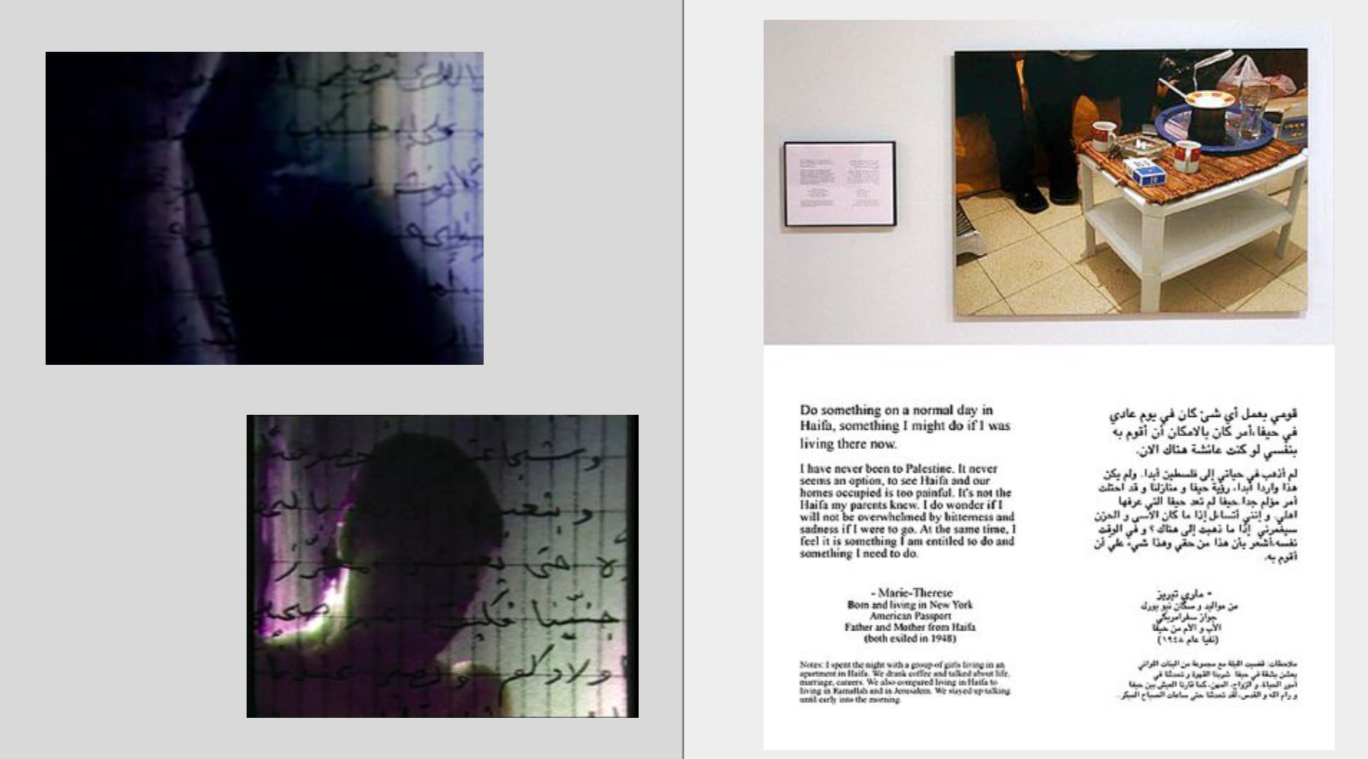
Çağdaş Bir Gizem: Çağdaş sanat artık yok mu? Ya da sadece bir kandırmaca mı?*
Begüm Tatari’nin konuk editörlüğünde hazırlanan “Çağdaş Sanatta Güncel Tartışmalar” dosyasını, çağdaş sanat tartışmalarını körükleyen, ikisi de ironi dolu, esprili ve cesur bir dile sahip olan iki yeni kitabın birlikte ele alındığı inceleme yazısıyla kapatıyoruz. Burcu Döleneken Yıldız’ın kaleme aldığı yazı, Avelina Lésper’in “Çağdaş Sanatın Sahtekârlığı” kitabında öne sürdüğü argümanları ve Ayşegül Sönmez’in “Çağdaş Sanat Var Mı?” kitabıyla ortaya koyduğu soruları değerlendiriyor

Shared Horizons of Liberation
“Measures of Distance” by Hatoum and “Where we come from” by Jacir
In-depth focus on the selected artworks of Mona Hatoum and Emily Jacir, two well-known and accomplished transnational artists of Palestinian descent. Examination of the ways in which their art inscribes a collective history and existence through unearthing personal narratives of exile and displacement.

Feminist artists, writers rage in ‘F213’ exhibition in San Francisco
A Critical Review of “F213” Exhibition
A critical review of the annual exhibition of The Northern California Women's Caucus for Art (NCWCA) “Fahrenheit 213”, one degree above the boiling point of blood took place in April 2019, with a special focus on Bay Area-based Pakistani-American artist, illustrator, and instructor, Aqsa Naveed, a Desi feminist.

“Can North Koreans Be Heard At All?”
Official Culture vs Second Culture
Examining the reception of North Korean Literature through cross-reading of two appraised books about North Korea; The Accusation: Forbidden Stories From Inside North Korea by Bandi and Nothing to Envy: Ordinary Lives in North Korea by Barbara Demick.

June 4th 1989, Tiananmen Incident
Reflections on Cultural Dimension
In the spring of 1989, students all around Beijing mobilized and marched to Tiananmen Square soon to be joined by workers, intellectuals, and ordinary citizens before they were violently dispersed by the military intervention on the 4th of June. Its memories effaced by the state propaganda how its mark can be traced in the arts?

Obscenity for Queer Interventions
An Expedition to the Grim World of Censorship in Visual Arts
Thinking of censorship in terms of ‘obscenity’ within the frame of ‘obscene arts’ helps to discuss the ways in which charges of obscenity are instrumentalized to operate, reiterate and reaffirm the normative identities and sexualities. However, on the other hand, it is crucial to investigate how the discourse of obscenity and obscene art can play and does play a constitutive role in broadening our understanding of the material presence of the body.

Decolonization of Sisterhood, Solidarity and Space
“The Women of Algiers in Their Apartments” by Assia Djebar
Anti-colonial and “oppositional” feminist struggle in “Women of Algiers in Their Apartment” (1980). Algerian-born writer and film-maker Assia Djebar’s first book to be translated into English is a collection of six short stories from 1958 to 1978 that is accompanied by a short essay, which is inspired by two of Delacroix’s paintings.